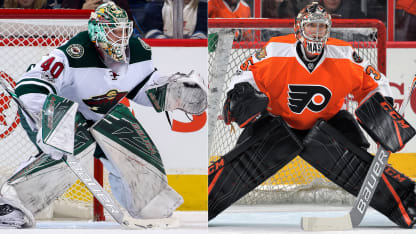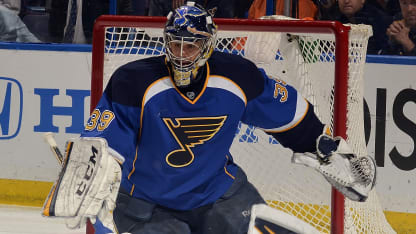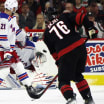Some goalies prefer to play with a little more flow or backward skating in their game and may adjust more readily to increased rush chances. Others are less comfortable with that extra movement and prefer a more passive, inside-out approach to positioning. Generally speaking, goaltenders with more movement tend to rely a little more on rhythm and timing, are better suited to regular starts and can struggle when they aren't busy.
"That's a mental task to stay focused, where you might not be getting the number of shots but, boom, you have a point-blank, 10-bell save you have to make," Mason said. "Some guys excel more when they are constantly facing 35-plus shots and have that rhythm."
Vancouver Canucks veteran Ryan Miller likes to play with flow in his game. He faced plenty of quality rush chances posting a .923 save percentage in Buffalo during the 2013-14 season but struggled to find the same level after a Feb. 28 trade to the St. Louis Blues, a better defensive team. It was a move that checked several of the above-mentioned cautionary boxes: first trade, fewer shots and fewer rush chances. Miller's save percentage dropped to .903 in 19 regular-season games with the Blues, and then to .897 during a first-round playoff loss.
Miller has spoken since about how hard it was to "go to a different mindset, different system, different expectations, just a lot of new things all at once." But for Miller, the complexities of a new defensive structure went well beyond facing fewer rush chances, including not being able to step out and challenge in certain end-zone situations the way he had in Buffalo.



















